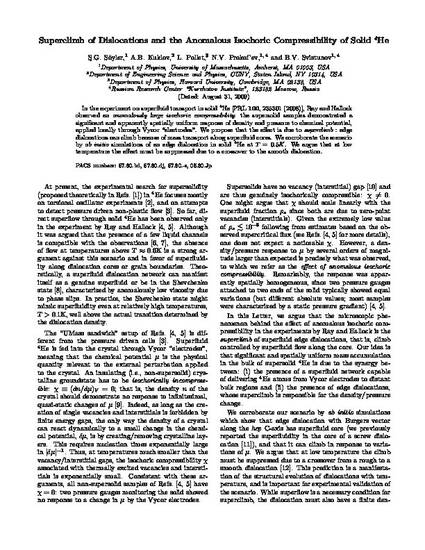
Article
Underlying Mechanism for the Giant Isochoric Compressibility of Solid 4He: Superclimb of Dislocations
Physics Review Letters
Publication Date
2009
Abstract
In the experiment on superfluid transport in solid 4He [Phys. Rev. Lett. 100, 235301 (2008)], Ray and Hallock observed an anomalously large isochoric compressibility: the supersolid samples demonstrated a significant and apparently spatially uniform response of density and pressure to chemical potential, applied locally through Vycor “electrodes.” We propose that the effect is due to superclimb: edge dislocations can climb because of mass transport along superfluid cores. We corroborate the scenario by ab initio simulations of an edge dislocation in solid 4He at T=0.5 K. We argue that at low temperature the effect must be suppressed due to a crossover to the smooth dislocation.
Disciplines
Comments
This is the pre-published version harvested from ArXiv. The published version is located at http://prl.aps.org/abstract/PRL/v103/i17/e175301
Citation Information
S Söyler, A Kuklov, L Pollet, Nikolai Prokof'ev, et al.. "Underlying Mechanism for the Giant Isochoric Compressibility of Solid 4He: Superclimb of Dislocations" Physics Review Letters Vol. 103 Iss. 17 (2009) Available at: http://works.bepress.com/nikolai_prokofev/17/
